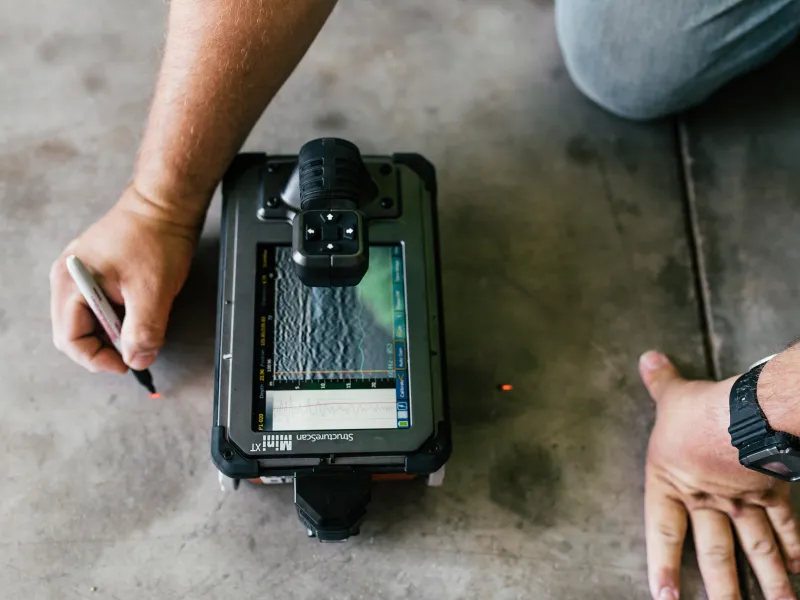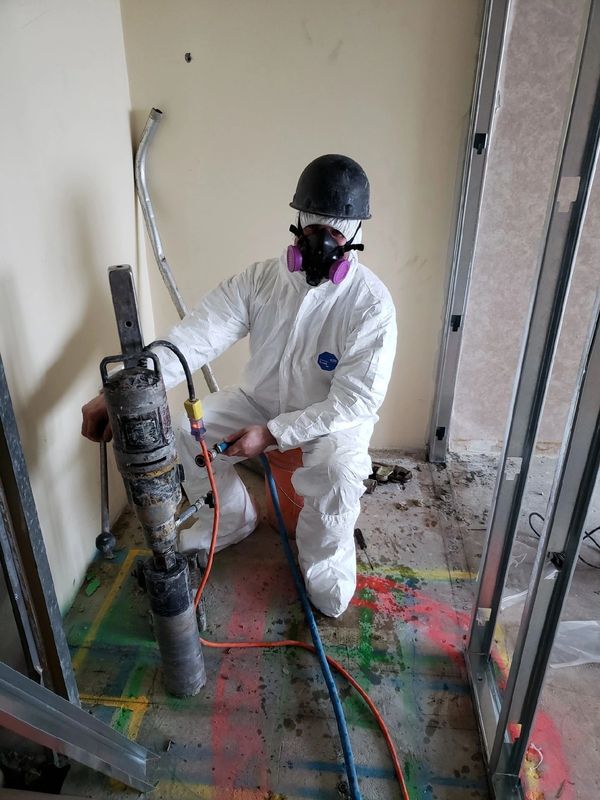Find RainierGPR Service Areas Near You for Expert Concrete Scanning
Find RainierGPR Service Areas Near You for Expert Concrete Scanning
Blog Article
Concrete Scanning: A Critical Action Towards Ensuring Architectural Honesty and Security
In the world of building and infrastructure maintenance, the value of concrete scanning can not be overemphasized. By using innovative technology and methods, concrete scanning offers as an essential device in making certain that the integrity and security of bridges and structures are promoted to the highest requirements.
Relevance of Concrete Scanning
Concrete scanning plays an important duty in ensuring the structural stability and safety and security of buildings and framework projects. By making use of advanced modern technologies such as ground-penetrating radar (GPR) and electromagnetic induction, professionals can non-destructively examine concrete structures to find possible issues, gaps, ingrained things, and support design. This process enables early discovery of abnormalities that can endanger the stability of a structure, avoiding expensive damages and making sure the security of residents.
Concrete scanning is specifically crucial throughout the preparation and building phases of a task. Prior to drilling, cutting, or coring right into concrete, scanning aids recognize the specific areas of rebar, post-tension cables, and other embedded components, reducing the danger of accidental hits that could lead to structural weaknesses. In addition, concrete scanning aids in quality control by validating the thickness of concrete covers and spotting any kind of inconsistencies that might impact the total toughness of the structure. Inevitably, buying concrete scanning services is not only a proactive procedure to alleviate dangers but also a basic step in the direction of preserving the long-lasting safety and security of structures and facilities.
Technology for Concrete Assessment

Benefits of Early Discovery
Timely detection of architectural problems can substantially mitigate threats and make sure the longevity of building and construction tasks. By identifying potential issues at an early stage in the building and construction procedure, stakeholders can take proactive steps to deal with issues before they intensify right into bigger and extra expensive problems. One of the essential advantages of early detection is the avoidance of architectural failures, which can position serious security risks and lead to task hold-ups and financial losses.
Furthermore, early detection allows for prompt fixings and maintenance, which can assist prolong the life expectancy of the framework. link By addressing problems immediately, building teams can avoid pricey repairs or perhaps the demand for early replacement of structural components. This aggressive strategy not only saves time and cash however additionally enhances the general safety and toughness of the construction project.
In addition, early detection can enhance task preparation and decision-making by offering stakeholders with important understandings right into the condition of the structure. Equipped with this info, task supervisors can make educated options relating to building timelines, products, and techniques, resulting in extra successful and efficient project results.
Making Certain Structural Stability
Ensuring the structural stability of a building and construction project is critical to its safety and security and longevity. Architectural security refers to the capability of a structure or infrastructure to maintain its type and feature under different tons and environmental problems. To accomplish this, extensive analysis and surveillance of the structure are essential. Concrete scanning plays an essential duty in making certain structural stability by identifying possible concerns such as spaces, delamination, or support deterioration that might compromise the integrity of the structure gradually.
By making use of sophisticated scanning modern technologies like ground-penetrating radar (GPR) and electromagnetic induction, building specialists can non-invasively inspect concrete frameworks to identify locations of worry under the surface area. This proactive approach enables for the very early detection of weak points or flaws, making it possible for prompt repair services or reinforcement to avoid architectural failures.
Normal concrete scanning during different building and construction stages and throughout the life process of a structure can help keep its stability, alleviate risks, and make certain the safety of occupants. By prioritizing structural stability via concrete scanning, construction tasks can enhance their durability and durability, inevitably adding to better safety and durability.
Stopping Crucial Failures
To protect against tragic events, thorough monitoring and positive upkeep are crucial in preventing crucial failures within structural structures. Finding possible problems before they escalate is key to avoiding architectural failures. Applying regular assessments, such as concrete scanning, can reveal covert flaws like gaps, fractures, or corrosion that can jeopardize the integrity of a structure. By making use of innovative scanning technologies like Ground Passing through Radar (GPR) or Concrete X-ray, engineers can non-destructively evaluate the Click This Link condition of concrete and recognize weak points that call for support or repair work - RainierGPR Service Areas.

Verdict
In conclusion, concrete scanning plays an essential role in making sure architectural integrity and security by using advanced modern technology for very early detection of prospective issues. This aggressive technique helps stop important failures and ensures the stability of structures. It is necessary to focus on concrete examination as a conventional method to secure the durability and security of buildings and facilities.
Concrete scanning plays a crucial role in guaranteeing the structural stability and safety and security of buildings and infrastructure tasks. In addition, concrete scanning aids in quality control by verifying the density of concrete covers and spotting any inconsistencies that may influence the overall longevity of the structure. Concrete scanning plays a crucial duty in guaranteeing architectural stability by finding possible problems such as gaps, delamination, or reinforcement deterioration that can endanger the stability of the framework over time.

In final thought, concrete scanning plays a crucial duty in making sure architectural stability and safety by using advanced innovation for early discovery of potential problems.
Report this page